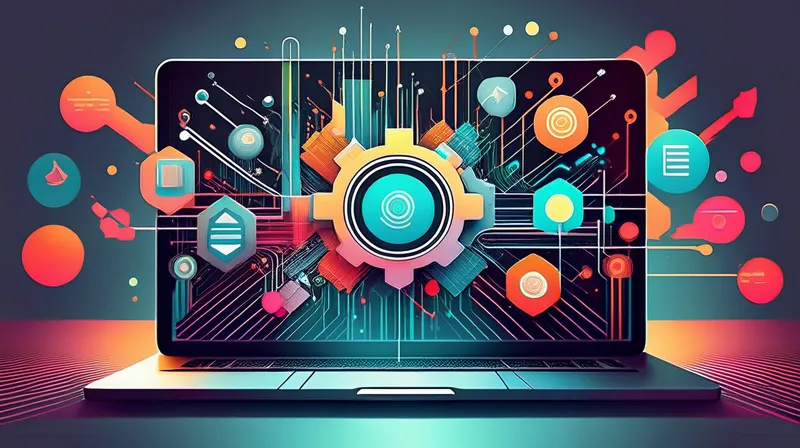Customers are not talking directly over the phone that much anymore. Instead, they use messaging on their mobile devices to socialise, evangelise and even publicise every aspect of their lives. Chat channels such as SMS and Whatsapp are the primary way people communicate today.
As such, eCommerce businesses have adopted messengers and chat platforms as one of the critical touchpoints for customers. Like never before, businesses depend on chat as their primary customer service solution. Be it to enjoy glowing feedback or receive scathing criticism, every company must ensure that they are readily available to chat.
There are several lessons to learn from these implementations – mostly around customer experiences and expectations. Our partner Haptik, an AI-Chatbot company, offers this insight from top eCommerce companies who have successfully transitioned to chatbots and gone on to deliver outstanding CX outcomes as a customer service solution…
Chat Is A Natural Form Of Digital Communication
Messengers are some of the most used apps in the market today.
Typically, e-tailers will have a hard-to-find phone number, a contact form, or an email ID as the nearest support options for the more significant percentage of visitors who visit their sites through smartphones.
Customers prefer AI or live chat when they need service on an e-commerce app. This is because messaging combines the real-time, synchronous nature of calls, the easily trackable nature of emails, and the self-serving nature of an FAQ page.
This is very neatly illustrated by Swiggy (Food delivery) and Goibibo (Travel booking). Both these wildly successful services have integrated chat as their primary support mode.

This works since the chat option is very natural at the point of sale. According to customers, it offers a seamless customer experience, which is a key brand differentiator, even more than low prices and good products.
According to Seshadri Vyas, Product Head for Goibibo’s GIA chatbot, “Users who tried using the bot once keep coming back to it for their next query or support need. Over the last six months, our share of repeat users has increased 4X!”
Now that sounds like some happy customers!
Chatbots respond quickly. OYO Rooms, India’s largest hospitality company, has found that a speedy response time is significant in a chat solution’s success. Varitant Goyal, Product Manager at OYO, explains, “Users expect a reply within seconds on chat. Though we are achieving good reply rates with agents, I feel that ultimate success will be created via an AI bot.”
Customers need to be heard 24/7/365, but maintaining a fully-staffed customer service centre is costly. A 24/7 e-commerce support AI chatbot is the perfect solution. Businesses stand to reduce customer service costs by up to 30% using bots. But how is it possible for AI to take this on?
Chat Enables Massive Scale Through Automation Over Time
Humans handle complex Queries; AI can also learn from the interactions.
While customer service is a significant priority for most companies, maintaining a large, dedicated in-house team isn’t a scalable strategy. It is also not within every company’s budget. Even before you consider seasonal, sudden spikes in traffic when companies see a more considerable amount of inbound traffic.
Many social media users who contact a brand expect a response within 30 minutes. This is a target human agents cannot always meet, especially for a smaller operation without a 24/7 staff on hand to field live chat conversations.
AI Chatbots are a perfect scalable support solution as they can quickly learn from an existing corpus of marketing data and can be deployed within days.
They ensure that the customer service desk is always staffed 24/7 and can easily handle routine, mundane questions right when they come in and pass on the more complex queries to human agents. Guests understand that complex queries might need some human TLC, so they are accepting of not all questions answered 24/7 but appreciate the effort to address most inquiries.
Also, to filter queries and make support cost-effective, companies often make customer service desks challenging to reach through mechanisms like Intelligent Voice Response Systems (IVRS). That’s where chatbots step in to manage most users who prefer getting service on chat. Goibibo’s GIA chatbot handles the first layer of support and encourages users to answer their questions through Auto Suggestions and FAQs quickly. This 24/7 availability has helped the brand create a customer-friendly perception and a fantastic CX.
Swiggy has already embraced this approach on their app. Whenever a customer has a query, the bot first asks the user about the issue they’re facing and offers an initial solution. If the user still wishes to speak to an agent, they can either place a call or continue the chat with a live agent (if available).

This makes for a seamless handoff, and the agent can refer to the chat to get a quick summary of the user’s problem. Goibibo has optimized its customer service processes and tools for this. This helps empower their human agents to monitor and take over a conversation quickly and easily.
The results are saving on training and personnel costs. Goibibo uses a metric called “Human Interactions Saved” to measure the efficiency of a bot. 60% of the time, when a user says just two or more messages, the conversation ends up being a human interaction saved because of GIA!
Plus, they provide a 24/7 conversational self-service option better than a static FAQ page. According to a report by Alvaria (formerly Aspect Software), 73% of customers want to solve product or service issues independently.
Chat Is An Omni-Channel Experience That Can Be Deployed Across Messaging Platforms
Customers reach brands across an average of seven social media channels and increasingly use platforms like Twitter and Facebook to voice their problems. (Don’t we know it!)
For example, in 2018, WhatsApp, with over 1.5 billion engaged users, opened its Enterprise Platform for brands to connect with customers. Among these was OYO Rooms, whose WhatsApp bot has extended the hotel booking experience to chat. The company has found that the bot receives thousands of chats per day even without any significant marketing or PR push.
This works for parts of the world where WhatsApp is one of the most easily accessible and popular apps, ensuring that customers have a direct helpline to your brand 24/7, thus streamlining the entire service experience.
Now different platforms can be played to their strengths for maximum utility from the bots. For example: Use WhatsApp bots to send a post-transaction update, use Facebook bots to encourage conversations, draw interest to new products, etc. KLM Airlines’ artificial-intelligence augmented BlueBot (BB) chatbot on Facebook Messenger and Google Assistant allows users to find flights, pack bags, and more. And their WhatsApp bot is an extension of their ticket booking experience. Providing an omnichannel experience can differentiate one eCommerce vendor from another.
Chat Can Be Used To Encourage Post-Sale Retention, Collect Feedback, And Drive Sales
Every support ticket is an opportunity to connect with a customer.
A chatbot can be used to encourage users to give feedback on a positive experience and even encourage them to make a repeat purchase with the help of a personalised coupon.
The conversational nature of chat makes for a compelling, personal connection with the user, which can scarcely be seen on other mediums. This line by Seth Godin sums this up excellently well — “Advertisers struggle to be heard through the noise. Customers service reps, on the other hand, can whisper.”
Combining this conversational experience with a marketing device like a coupon code campaign is a great way to incentivize usage — especially since these promotional offers are seeing a sudden renaissance. Who doesn’t love a sale or a coupon?
This works well because the bots are engaging. A messenger or chatbot that sends custom notifications from your app/website increases app launches by 27% and boosts engagement by 3x.
Selling the right product at the right time during the right conversation can lead to sales. In fact, for the average small and medium e-commerce business, 70-95% of revenue comes from upsells and renewals. Selling to people who want to hear from you is more effective than interrupting strangers who don’t. And at the end of a conversation is a great point to collect feedback since the user has a distinct idea of your product or service. Visitors are happy to share a minute of feedback, knowing playing it forward will help the next guy; what goes around comes around.
Chat Can Be Used To Measure And Gain Insights
Fixing customer service issues is never enough.
Prevention is better than cure, after all. A solid conversational analytics tool can help companies know precisely what products customers are talking about and their likes and dislikes, contributing to making better business decisions.
Knowing about trends in user issues quickly helps preemptively fix bugs and catch them before they turn serious. This can ensure that a company’s first time fix rate (the % of complaints fixed the first time around) is at its highest, which helps improve overall efficiency.
Make decisions about product warehousing and planning.
Knowing exactly what customers are looking for is a great differentiator in e-commerce. Planning for particular spikes in seasonal shopping (e.g., Decorations during Christmas) can help drive sales and revenues in the right direction.
In Conclusion
Any e-commerce company that isn’t considering AI-empowered chatbots as a primary customer service channel is failing to address a clear opportunity to improve the customer’s experience and consequently retain more business.
Seshadri Vyas, Product Head for Goibibo’s GIA agrees and summarises this well. “We feel that customers are giving a strong thumbs up to this channel & businesses looking to be customer friendly have enough reasons to invest in a chatbot.”
As smartphones become the primary digital interface the world uses, every business needs to have a direct communication line on chat. This will help them harness the “personal” connection the cornerstone of great customer service.
But it doesn’t have to be on mobile devices; the same customer experience now can be exchanged on desktop, mobile and tablets across apps and sites like Facebook, Instagram, WhatsApp, SMS, Google Business Messenger and more.
No matter what you sell, give your customers an AI-powered shopping experience, build trust, drive higher conversions, and best-in-class support using Haptik‘s Intelligent Virtual Assistant.
To learn more about the ultimate commerce & support solution for eCommerce business, visit here and discover how Haptik is Driving the World’s Transition to AI-Powered Conversations
Grow your business with Expandly
We make it easy to connect your sales channels so you can focus on growing your business. Find out more and book your demo of the Expandly platform today!



